Home & Living
Patrick Sutton Celebrates 30 Years of Making Baltimore Beautiful
The revered interior designer reflects on three decades of loving Baltimore, telling stories through design, and building a portfolio that is as thick as it is impressive.
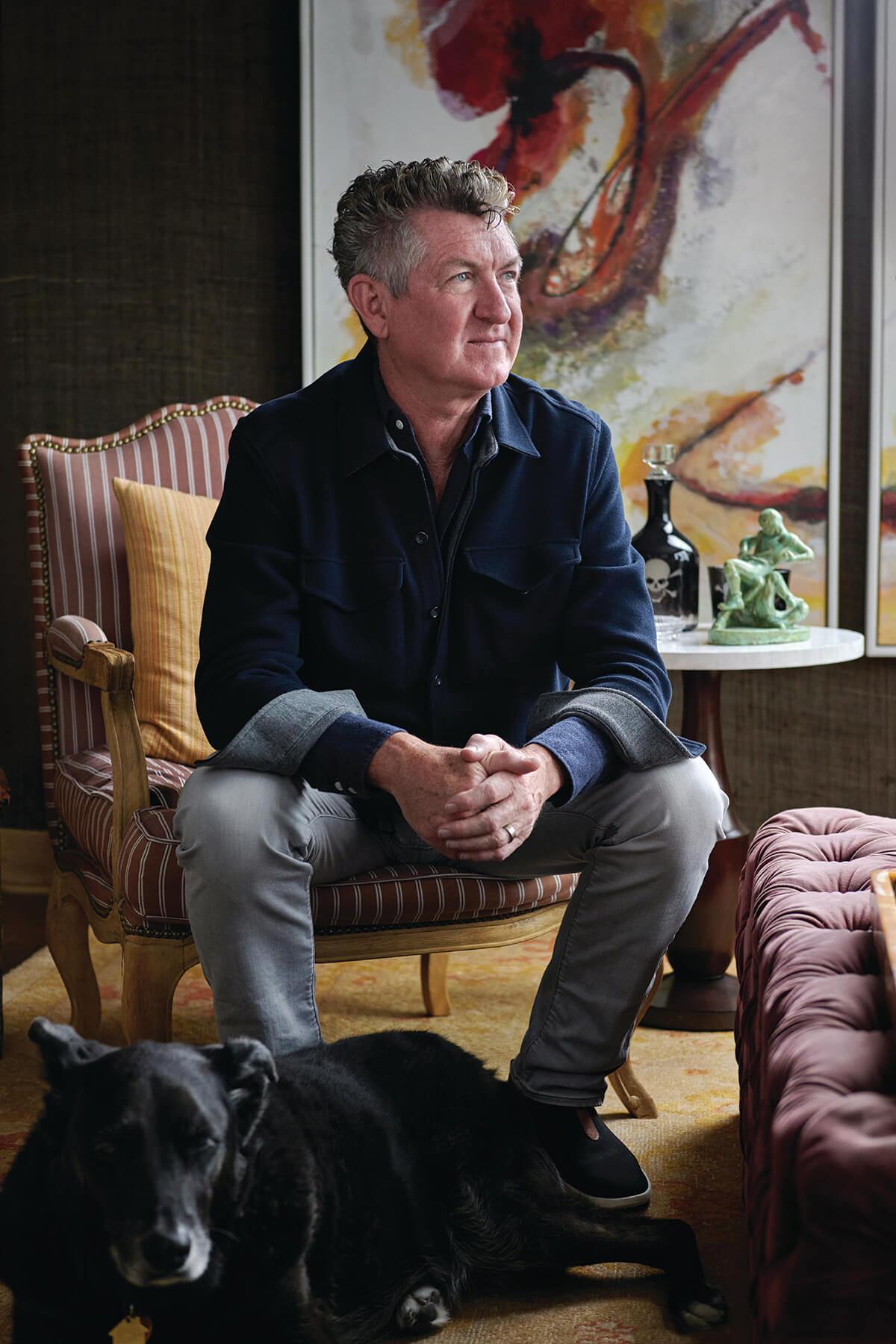
It may come as a surprise that interior designer Patrick Sutton’s office is a bit generic.
“It’s basic,” he admits from behind his simple wooden desk that’s stuffed inside the Federal Hill rowhouse his company has been occupying since September 2001. “We definitely didn’t try to design a showcase—it’s basically a vessel to create design.”
And create design Sutton has—after 30 years in business, his portfolio is as thick as it is impressive.
It turns out Patrick Sutton is both a “normal guy” who likes football and baseball games, hanging with his kids, vacationing with his wife, and calling his 13-year-old dog, Stella, the “center of my world”—and a world-class designer with movie-star hair, a résumé full of industry awards and accolades, and a roster of clients that could best be described as fancy.
“I’m going to tell you this—you’re going to laugh at me,” says Sutton. “I’m 61 years old but I still think of myself as 25 trying to make it.”
He says this as his staff—17 workers “shoehorned like Keebler elves” into the building, he jokes—work on some 40 projects, including six currently for the Baltimore-based Atlas Restaurant Group.
While Sutton reflects on three decades in the business, he looks around the room. Yes, the space is surprisingly no-frills, but not without its personal touches. He gestures to a photograph by contemporary Dutch visual artist Hendrik Kerstens depicting a stoic-looking woman in a red turban, a playful nod to the works of the Dutch Old Masters. “It’s art I can afford,” he jokes. “It’s in the tens of thousands, not hundreds.”
On a side table between two bookcases, sits Footloose in France, the first book written by his father, Horace Sutton—a travel writer and a huge influence on Sutton’s life. “When I went on my book signing across the United States, I carried this to honor his memory, which I thought was kind of cool.”
Next to the book is a candy corn lamp he bought at auction. Yes, the entire base is the shellacked Halloween treat and the shade a fuzzy yellow and pink. “My favorite is when the air conditioning turns on—those feathers dance a little bit.” It’s garish and a bit of surprising décor until Sutton adds, “I put that there so that when people come in here, they know I don’t take myself too seriously.”
From afar, Sutton’s childhood seemed glamorous. His father was a pioneer in transatlantic travel journalism, so young Patrick grew up tagging along on his overseas trips to the most beautiful places in the world—“hotels, restaurants, palaces, things like that,” he recalls. He remembers as a little boy just soaking in all the sounds, sights, and smells.
“You’re wandering down beautiful hallways or strolling through gardens, and you just get a sense of the design and the romance and the lifestyle.”
But the other part of Sutton’s upbringing was his mother’s ongoing struggle with mental illness. He didn’t know any other life, but suspected something was different at his home. “It made me an avid listener and observer,” says Sutton, qualities that serve him well in his work.
And there was something else he came to realize after years of therapy. “I could never heal her, so I’ve been trying to heal everybody else through design,” he says.
His first foray into design came in high school when a teacher recognized a natural talent in his architectural drafting class. After a summer program at Harvard called Career Discovery, Sutton headed to Carnegie Mellon University to study architecture.
“I did really, really well there,” says Sutton. He was so immersed in his studies he would keep a sleeping bag under his drafting table so he didn’t need to waste any time walking back to his dorm to sleep. “I just wanted to get all this design out. Like, if you talk to any artists, they’ll tell you that they have this overwhelming need to get it out. And I had that.”
After graduation the job offers rolled in. Sutton didn’t want to go back home to New York, so he figured Washington, D.C., was the next best option—close enough to visit his family but “far enough away that I can make my own path.”
But he didn’t feel a connection to the city when he visited. One of the firms pitching Sutton mentioned their headquarters were in Baltimore—“just an hour up the road,” they told him. Sutton went to take a look.
“I had just spent four years of my life in Pittsburgh, which is just like Baltimore. It’s a working-class city of neighborhoods. And so, I saw something very familiar, and I thought it was charming. And I said, ‘Okay, I’ll give it a year.’ That was 1985.”
He lasted at the firm for nine months, but hated how corporate it felt, so he switched to a smaller agency, Robert Kaplan & Associates. Within three years, he was a partner.
“I was gung-ho about it, but I started getting a little disillusioned on the architecture piece, because I would design these houses, and then they would hand it off to some interior designer whose vision was completely left field of what I thought the project wanted to be,” says Sutton.
And so, he began adding interiors to his architectural projects. “That was the first time that I started to realize that there’s a whole story here about the people that are living in these houses that need to be crafted and curated as a whole,” he says. He found that he was drawn to the more human aspect of interior design.
“I think that this is going to be an unpopular thing to say, but I think it’s true that most architects have to disassociate a little bit from the owner and think a little bit more abstractly than someone in the interior design business,” he says. “We really focus on lifestyle, and how are people going to live in these spaces and have meals and entertain and raise their children.”
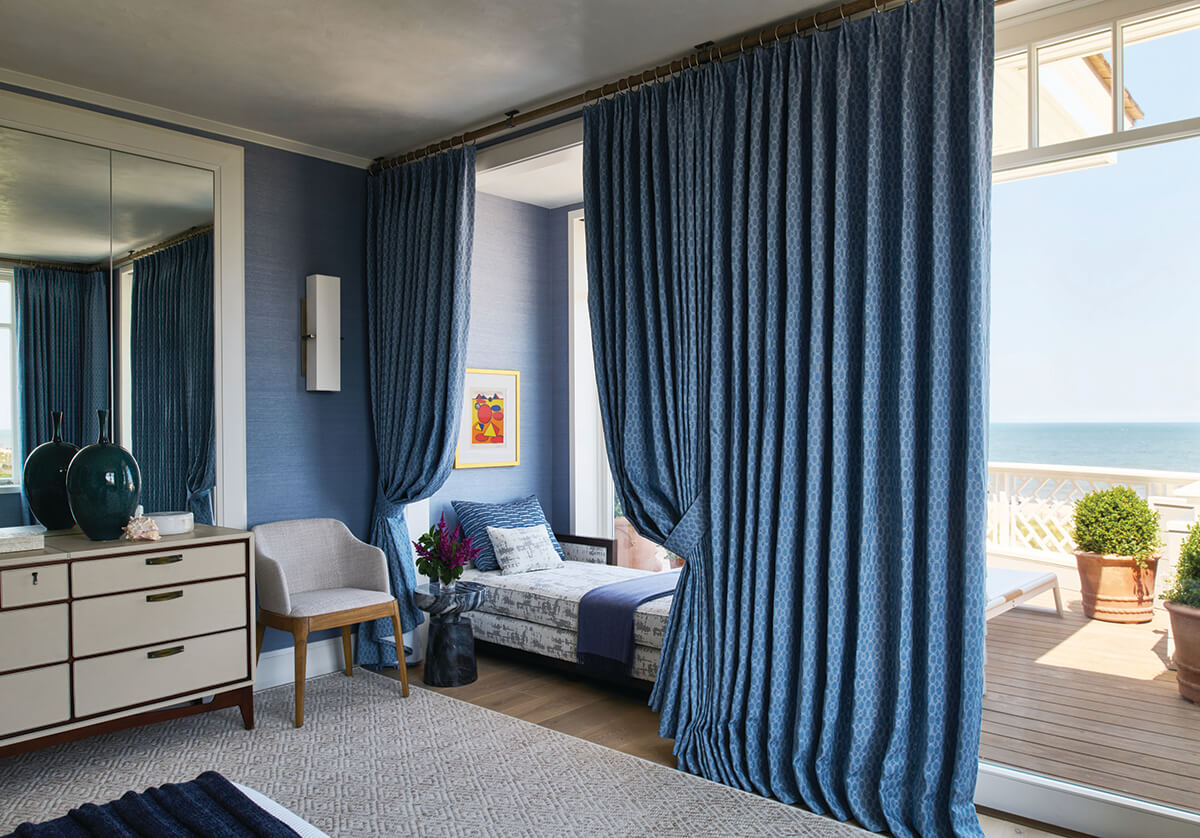
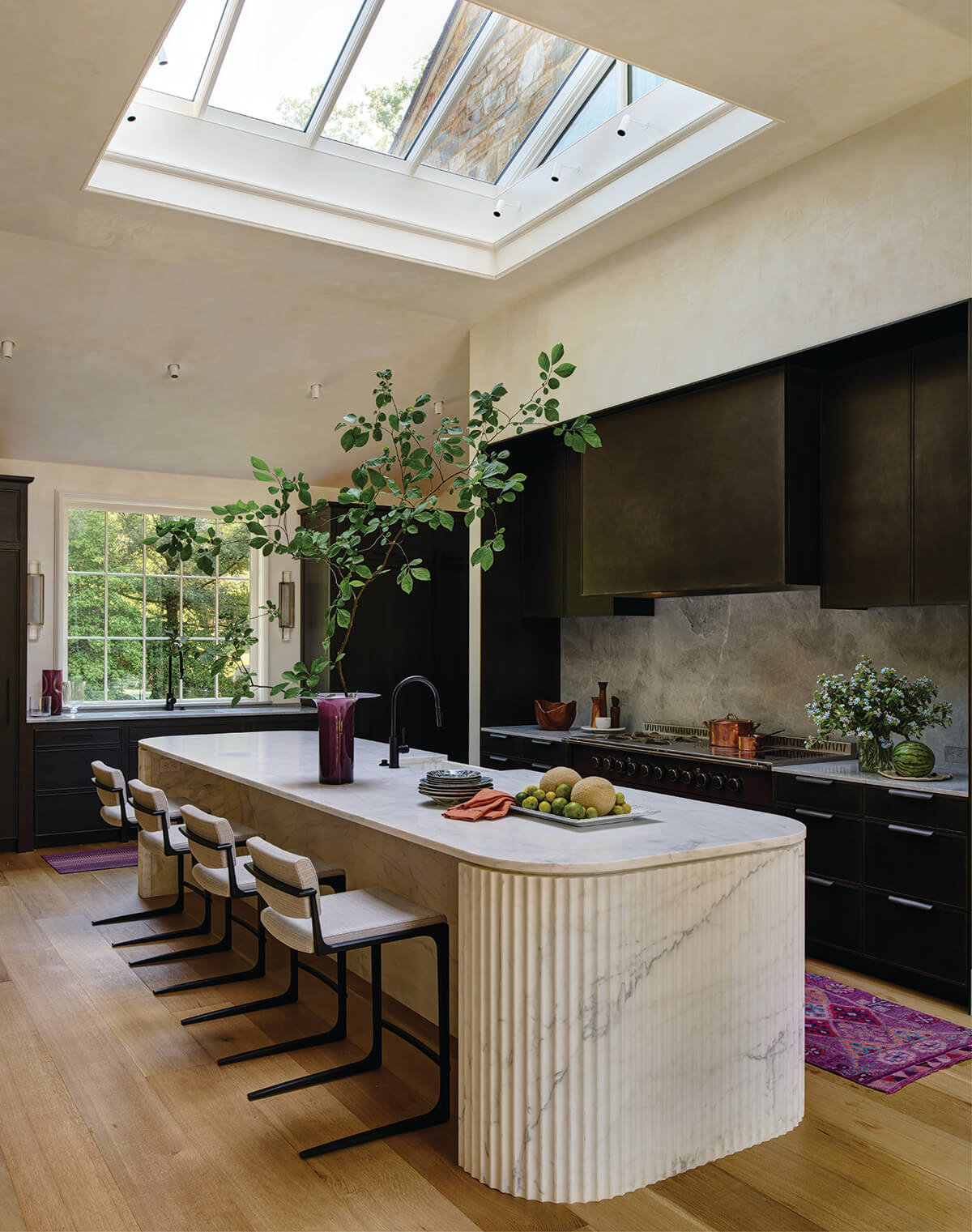
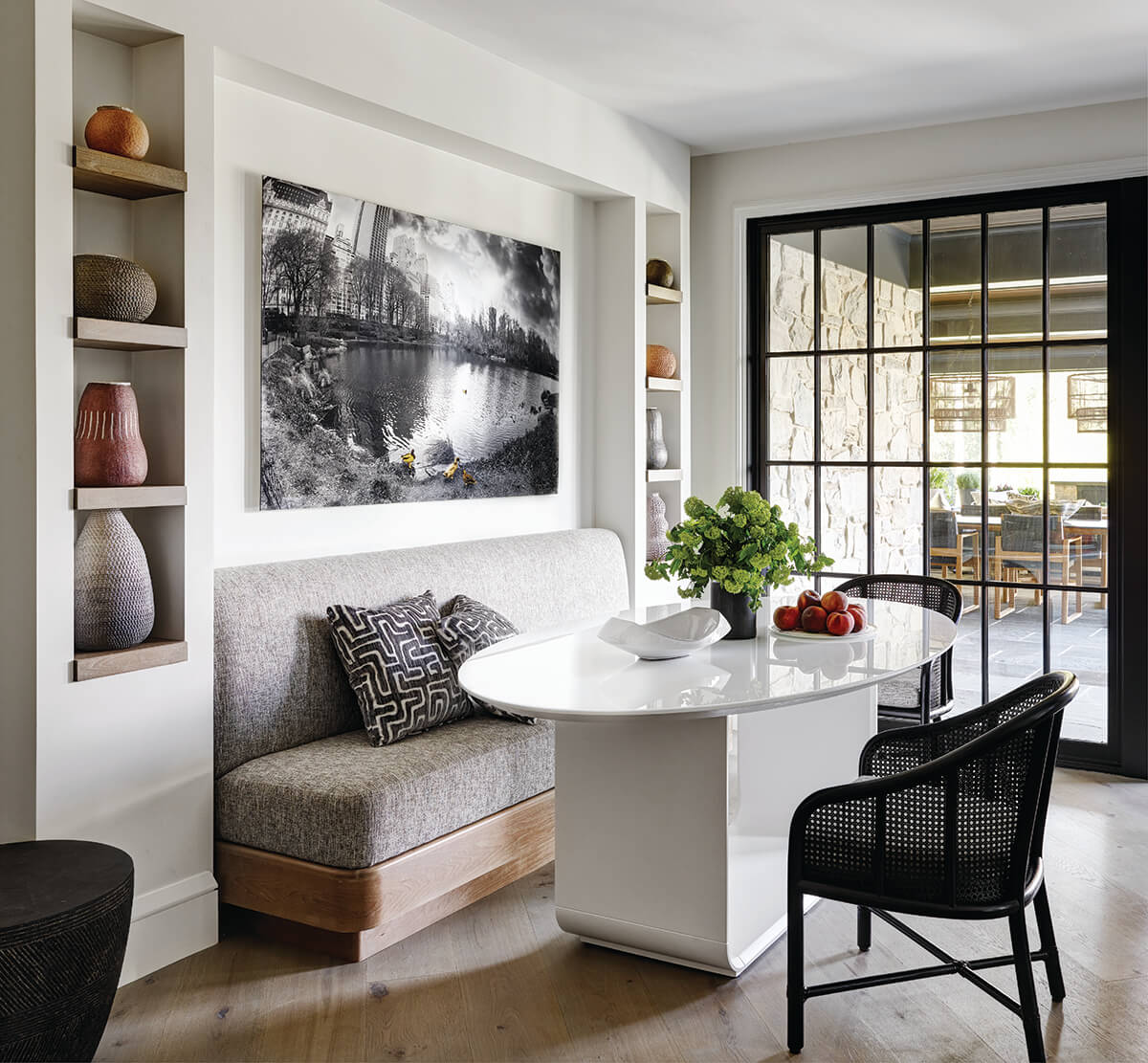
For Sutton, architecture was about order and structure, but design was about living and connection—and he craved the latter. So, he officially switched from architecture to interior design.
“I approach each project like a story that’s waiting to be told,” says Sutton, who has truly leaned into the idea of storytelling through design. (His second book is due out next year.) With every client he asks about their “hopes, dreams, and aspirations” and couples that with the house’s energy—“that genius loci,” he says referring to the protective spirit of a place. It sounds a little woo-woo until you see the unbelievable spaces he’s created that are luxurious yet comfortable.
“It’s not surprising that my childhood was in palaces, restaurants, and hotels, and the three things that I do are luxury residences, restaurants, and hotels,” he says.
He attributes a lot of that success to staying firmly planted in Baltimore. “If I had gone to New York, my career probably would have started faster, but look at all the opportunities [Baltimore] gave me,” he says, mentioning Pazo, his first restaurant design collaboration with Foreman Wolf. That place had a festive decadence, a far cry from other bars and restaurants in the city, says Sutton.
When he first started, he had to “smuggle design in the projects” because Baltimore was so conservative. He designed the entire Pendry Hotel for Kevin Plank and penned the vision statement for Port Covington, one of the city’s newest developments. He has now designed countless restaurants with Atlas Restaurant Group, too.
“What sets Patrick apart is how well-traveled he is,” says Alex Smith, Atlas’ president and CEO. “He’s seen so many different concepts through his travels around the world, and he brings that global perspective into his work. He’s not just focused on one aspect, like fabric or décor—he thinks about the entire experience. From lighting to candles to artwork, he creates an immersive environment that feels cohesive and thoughtful.”
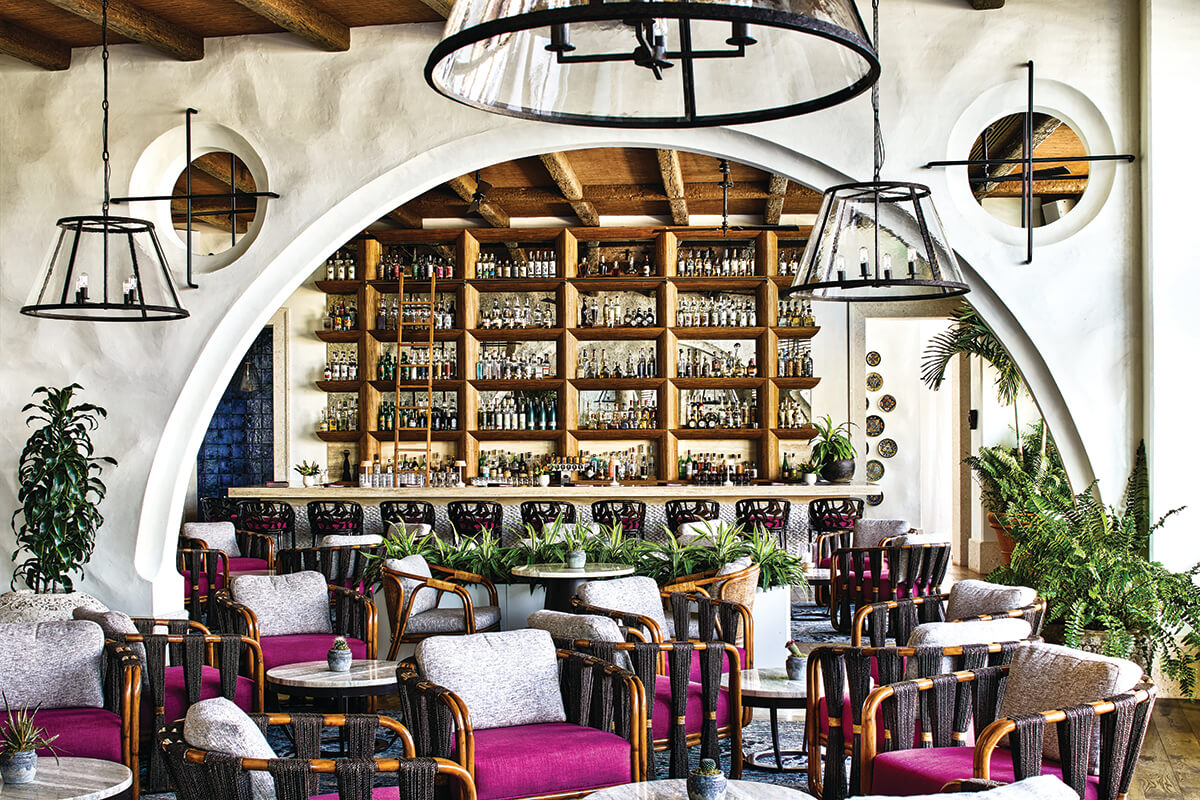
Clients also hire him because he gets what restaurants and hotels have to do—it’s about the immediate wow. “You’re designing for a shorter period of time,” says Sutton. “So, it’s kind of like, if you’re a guy, and you walk into a bar and it’s dimly lit, you see this hot, beautiful woman at the bar, and you’re like, ‘Oh, I’d love to spend a night with that person,’ but you don’t necessarily want to marry them.”
There’s a different design aesthetic when you are capturing someone’s attention for a few hours or days verses day in and day out. “So, in a restaurant or hotel, there’s more eyeliner, you’re really pumping up the volume…in a residence, you’re creating a background for life.”
He smiles. He loves good metaphor almost as much as he hates the word legacy, a word often used to describe his body of work.
“It sounds a little haughty to me. I don’t even know what that means.” But he understands how lucky he is to still be busy, relevant, and even revered 30 years into a career—and as much as he loves the big, glitzy projects, he’ll never stop designing people’s homes.
“You know I’m going from Pazo to the Pendry to writing this vision brief for an entire community, but meanwhile, like my day-to-day, I’m picking out the trim that goes on the edge of a drapery.”
Two ends of the spectrum, but all important. Thirty years of hard work and therapy have gotten him to a great place.
“I became a happier person. I calmed down. I had nothing left to prove,” says Sutton.
He also finds joy in mentoring the next generation of designers. “I can move from being quarterback to coach, and I think that’s fulfilling.”